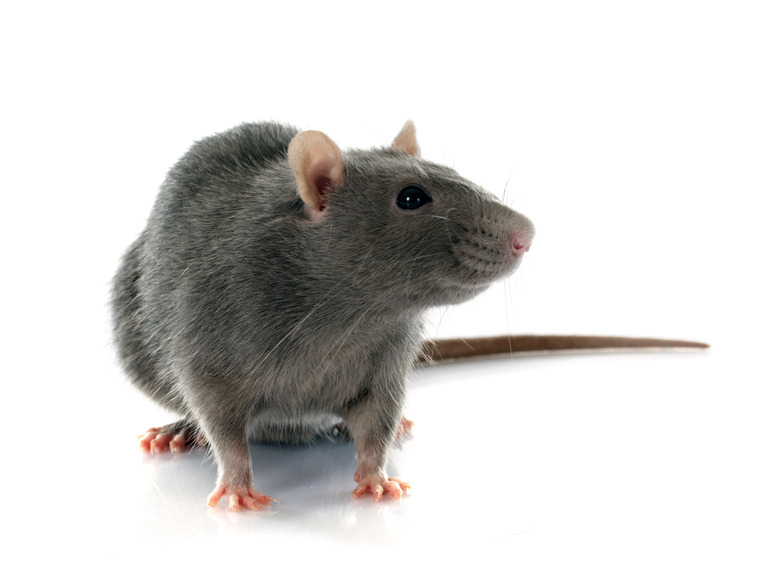What Are The Dangers Of Cleaning Up Rat Feces?
We may receive a commission on purchases made from links.
Homeowners with a rodent infestation should exercise extreme caution before handling rat droppings. Rat feces carry a number of potentially fatal diseases that spread to humans, usually by hand-to-mouth contact.
If you have some rat droppings and wear protective gear, you can try to deal with your unwelcome intruders yourself. If you have a large infestation, however, you should contract the services of a trained pest control company to eliminate the risk of contracting viruses. Rat droppings are blunt or pointed spindles of between 0.6 inch and 0.8 inch in length and are dark in color.
Tip
Rat feces carry a number of potentially fatal diseases that spread to humans, usually by hand-to-mouth contact. Wear protective clothing, double-bag any nesting materials and feces, and wash your hands well when you are done.
Suit Up and Take Care
Suit Up and Take Care
If you're removing a rat nest, the CDC recommends wearing rubber, latex or vinyl gloves when attempting to clean up rat droppings. Double-bag the droppings or any nesting materials in the rat nest, tightly seal the bags, and discard in a covered trash can.
Use a disinfectant or a mixture of bleach and water to clean impacted areas. Once finished, wash your hands thoroughly.
Hantavirus Pulmonary Syndrome
Hantavirus Pulmonary Syndrome
Hantavirus pulmonary syndrome, discovered in 1993, is a rare disease found in the United States. The potentially deadly virus transfers through rat urine and droppings. Aching, tiredness and a fever are early signs of an infection and the large muscle groups are most commonly affected. As the disease develops, headaches, nausea and vomiting are prevalent. The late symptoms of hantavirus pulmonary syndrome are coughing and a shortness of breath that resembles being smothered by a pillow. Symptoms appear after one to five weeks of contact with rat feces and infections are often fatal.
Hemorrhagic Fever With Renal Syndrome
Hemorrhagic Fever With Renal Syndrome
Hemorrhagic fever with renal syndrome, or HFRS, is a global illness derived from the Seoul, Hantaan and Puumala viruses. Often found in Eastern Asia, HFRS transfers through the droppings, urine and saliva of rats. The CDC began to track HFRS in the U.S. in 1993; by 2017, there were 728 cases, so it is growing threat. Unlike other diseases, HFRS passes from human to human, although this is quite rare. Incubation takes one to two weeks, and symptoms include violent headaches, abdominal pain, fever and blurred vision. Fatality rates can be as high as 15 percent, but supportive therapy combined with fluid and electrolyte intake usually proves to be an effective remedy.
Arenaviridae Causing Lassa and Brazilian Fever
Arenaviridae are a family of viruses transmitted through rat droppings and urine. Common diseases include Lassa fever and Brazilian hemorrhagic fever, which are specific to one particular species of rat in each case. Arenaviridae is particularly common in South America and has unique strains found in countries such as Bolivia, Venezuela and Argentina. Agricultural workers are often prone to viruses and in many instances, diseases pass from person to person by airborne transmission. Flu-like symptoms are common and some strains of the virus result in blood being found in human urine and stools.
Leptospirosis From Feces in Damp Places
Leptospirosis From Feces in Damp Places
Leptospirosis transfers to humans when rat feces are cleared from wet or damp areas during an infestation. The rodent often urinates at the same time as it produces droppings, which results in cross-contamination of water and a greater risk of contracting multiple diseases. Symptoms include jaundice, rashes, abdominal pain and red eyes. Leptospirosis requires antibiotic treatments and the disease is often contracted by sewage workers, water sports enthusiasts and children.
